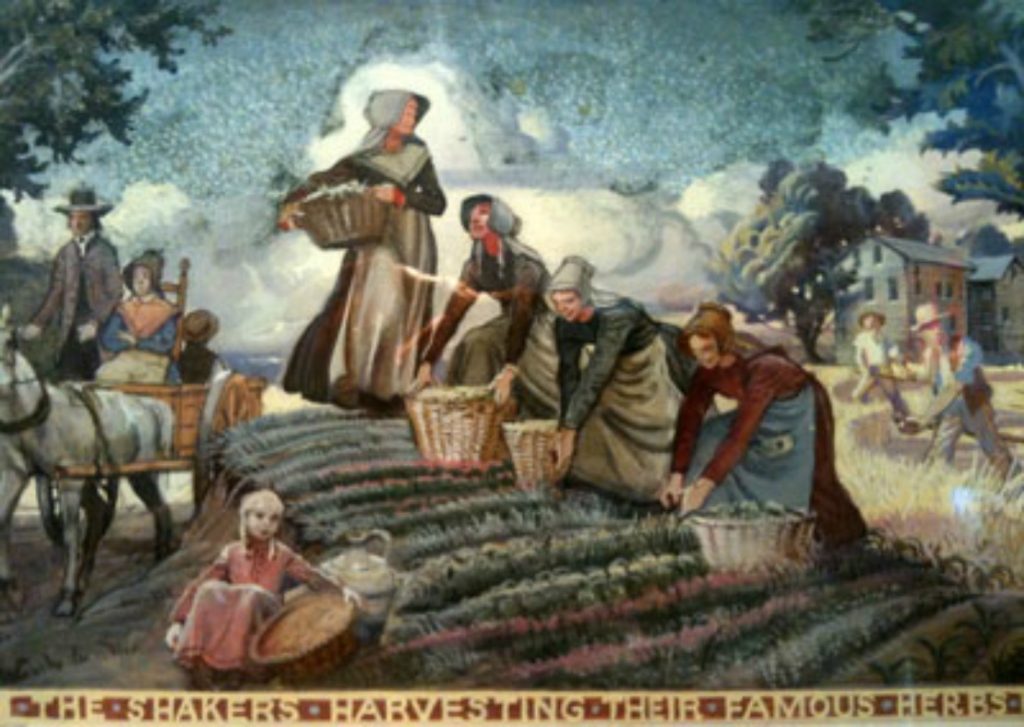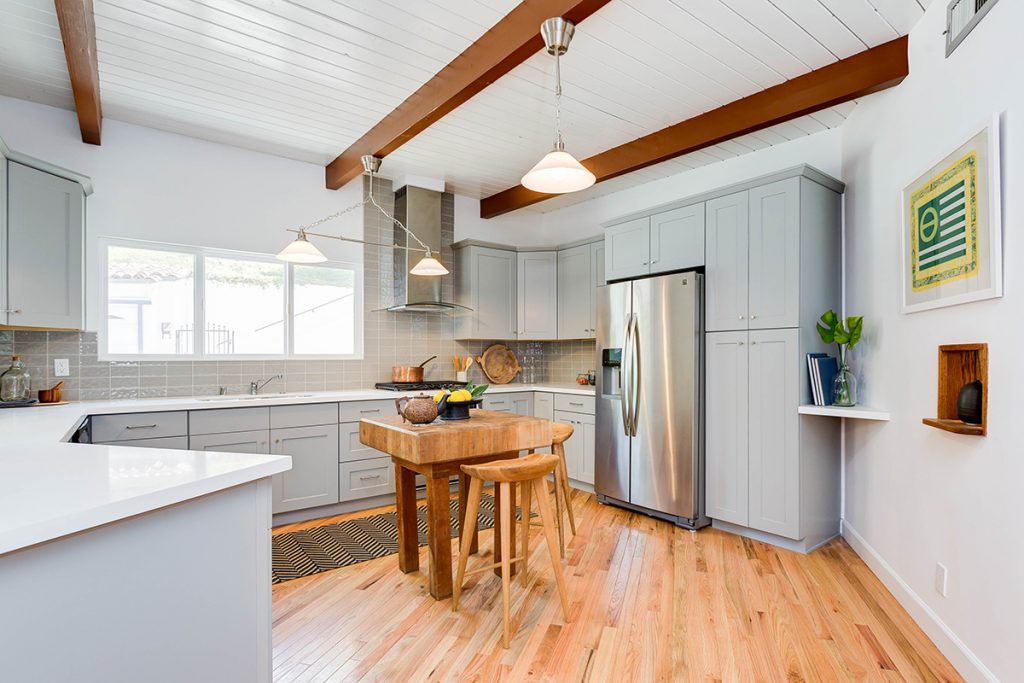
13 Jul The Shaker Style: A History Steeped in Theology
How one of the most common kitchen styles has its roots in religion
A term now widely used in Europe to describe a type of woodwork that has achieved worldwide appeal, “Shaker Styling” originated in North America and has become a kitchen standard. It represents a woodworking genre that is widely considered beautiful in its simplicity. It is gracefully designed yet basic in detail. The Shaker style has proven to be an enduring work of art. Its birth is attributed to the craftsmen of the Shaker villages located in the Northeastern U.S. They belonged to a religious faction known as – you guessed it – “The Shakers”. They were named as such after the way they would excitedly move and shake their bodies in praise during their church services. Perhaps a contributor to the great energy, their beliefs dictated an order of celibacy. As a result, the followers were forced to actively adopt children in order for the community to maintain itself. Despite the attempts to persevere, the last Shaker village disappeared in the early 20th century.
It was the Shakers philosophy to honor and praise God by never falling idle, to always be active and busy with tasks of merit. Most importantly, they believed one should be the best they could, in the lives they lived as well as the products they produced. Interestingly, the Shaker’s homes served as dormitories of a sort, the sexes segregated into buildings that were built with a variety of rooms. They were efficiently designed and you could even hang chairs unto corresponding wall pegs in order to create more floor space.
Classic design elements most often found in shakers centered mainly on simplicity of detail and conservative craftsmanship. An exploration of these styles reveals some interesting choices reflective of colonial rustic flavor.

Depending on what was available, the woodwork (such as the window frames, peg rail, skirting or bearded board wall systems) would be painted in tones ranging anywhere from pinkish to terra cotta earth shades, yellow to olive green, and even greenish blues to denim. The paints were created from dyes and pigments derived from the surrounding clays and plants. The resulting palette was truly unique and representative of “Shaker colors”. The white plaster that most often made up the ceilings was usually colored by the paints as well.
Meanwhile, accessories were produced by Shaker artisans in abundance; a wide variety of woodturning for everything from cabinet pulls to pegs for wall hanging systems. In fact, wood pegs were a staple of the output. Simple metal or hand forged finishes were sometimes used as well.
Meanwhile, the countertops were square edged and solid and made of one of the following – soapstone, granite or limestone. The walls were painted or finished in off-white or earth tones. Often, tall beaded board wainscoting was used with the pegs. The floors were built of varnished timber or wood and it wouldn’t be unusual to find a stone floor in a Shaker home. On either surface, woven wood or rag rugs were laid on top of the otherwise hard floors. Like the walls, and as mentioned previously, the ceilings were of plaster and painted white or off-white. An interesting rural aesthetic introduced at the time was that of wooden ceiling beams.
The fabrics were obviously hand woven and somewhat plain, particularly when compared to what American Indian natives were producing for years at the time. The Shakers intentionally avoided patterns. Even so, instead of settling on dull interiors, they actually allowed a bit of decorative flair inside with checkered fabrics. Such types as miniature gingham, window checks and even checks that used more than one color were used.
These are some of the most important elements that comprised the Shaker Style. It was the belief that their God discouraged idle hands that made the development of such elegant classicality possible. And that in itself, is kind of beautiful.





Sorry, the comment form is closed at this time.